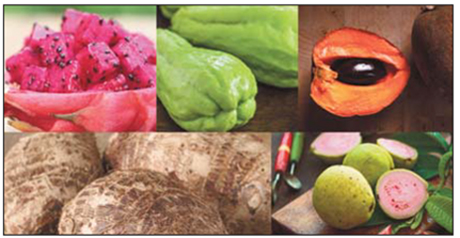Welcome to Blue Book!
Are you ready to join the thousands of companies who rely on Blue Book to drive smarter decisions? View our plans and get started today!
Still have questions? We’d love to show you what Blue Book can do for you. Drop us a line– we’ve been waiting for you.

Similar to cherimoya in usage and texture, guanábana (also called graviola or soursop) has been a relatively obscure commodity, but interest is on the rise as consumers read about its possible cancer-fighting properties. Like mamey, guanábana is one of the fruits on the U.S. border’s no-import list due to its extremely delicate nature. It has a very short shelf life and is acutely sensitive to temperature fluctuations—even Central Florida is too cold. As a result, it is grown exclusively in South Florida and available only in the summer.
According to Richard Ruiz, president of Edinburg, TX-based Ruiz Sales, demand for something a bit less exotic but still tropical—limes—is climbing. Despite their mainstream status, chefs and baristas have become much more creative with limes, using them in everything from margaritas to salad dressing. And for many Asian and Hispanic households, limes are a staple product.
“As Hispanic families move to different areas of the United States, they bring limes and demand [for them] to those areas, which helps with increased availability,” Ruiz says. “In addition, a shift in the American palate for healthier, more ‘exotic’ foods has pushed limes into the spotlight.”
CROSS-CULTURAL GROWTH
Not surprisingly, many of these commodities enjoy great growth and popularity in the Northeast Corridor, especially in New York, but also in Florida, Texas, California, and the Northwest—states with large Hispanic and Asian populations. As these populations continue to move about the country and settle in areas of the Midwest and the South, their influence on American cuisine follows.
While their names may sound exotic and a few of the commodities discussed in this article are surprising to look at, for many, these fruits and vegetables represent much more than a sweet, sour, or savory treat. “At the end of the day,” Capote observes, “what really drives sales and growth is when people go to the supermarket and see products they consumed in their country—it’s a connection to their homeland.”




